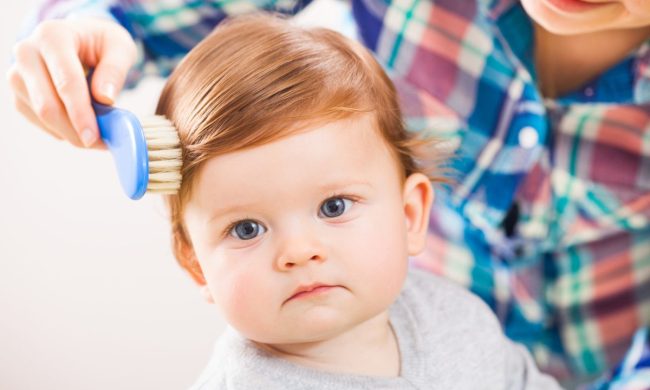Traveling with your family is a wonderful bonding time and helps create memories all of you will treasure forever. There’s one memory you may not love, however, and that’s the memory of struggling to get your toddler to sleep in a strange environment.
Toddler sleeping arrangements can be tricky. You need something safe, convenient, and most importantly portable. Many travel cribs are clunky, and relying on hotel options is a great way to get started on the wrong foot.
Every toddler needs their own travel bed — trust us. Here are five reasons you should consider adding one to your collection and a few tips for how to choose the right one.
Your destination may not have extra beds
Hotels can sometimes make accommodations for extra sleepers in a room, but the typical hotel option is just a standard rollaway. You’ll still need your own rails to keep your child safe from rolling off the sides.
Rollaways are inconvenient for standard hotel rooms as well, taking up valuable space during the night, and folding them up could be a waste of time during the day, especially if there’s a nap time involved.
Plus, hotels have their own rules for which rooms can have rollaway beds at all, causing you to upgrade your room for no reason or go without.
Portable cribs are inconvenient
If you’re still using your portable crib, you might notice that it’s heavy and difficult to assemble. Those extra pounds make a huge difference when you’re checking bags and equipment in for your flight or trying to load in from the second floor (or more) of a hotel.
Portable cribs have a lot of moving parts, and while they’re suitable for an infant, toddlers can streamline. If you’re buying a piece of equipment for your first trip, there’s no need to invest in a more expensive travel crib when there are other options available.

Portable cribs aren’t safe for toddlers
If your toddler is trying to climb out of the portable crib, that can be a safety nightmare. Cribs are intended for children who aren’t pulling up or trying to walk, much less ones that can climb over the side.
A toddler bed offers safety where your child needs it, on the sides to prevent rolling off in the middle of the night. They can support a toddler’s weight and don’t pose a collapse risk that can cause injury. There are no pieces that can pinch small fingers, and there’s no net that can end up collapsing over your child’s head.
Travel toddler beds are more convenient
Travel toddler beds are cleaner than your average hotel rollaway, and you can control the cleanliness in the first place. You won’t worry about stains or messes on a hotel bed because you know every step of the cleaning process.
Toddler beds provide safety without having to carry portable railings that can fail. You won’t have to keep your toddler in your bed unless you want to, and you won’t worry about your toddler falling in the middle of the night.
Plus, travel toddler beds can go to a variety of locations. Whether it’s a hotel or grandma’s house, you’ve always got a place for your toddler to sleep that’s familiar and built for safety. When the time comes to fold up and go, travel toddler beds are often more lightweight and compact than other types of portable cribs.
Travel toddler beds are affordable
While you may splurge on certain things for your child, the temporary gear may not be one of them. Your toddler will eventually grow out of their travel bed, and you may decide to spend your big budget on items that will last (like their big-kid room).
Travel toddler beds are typically affordable — more so than travel crib setups. You can get something convenient that won’t break the bank, which will give you more options for splurging on other, more exciting things.

Choosing the right travel toddler bed
You have a few different options for the type of travel bed. Let’s take a look at what they have to offer.
Inflatable
Inflatable toddler beds look a lot like regular inflatable beds with one big difference. They’re two pieces. The sides inflate to provide fall protection, and the pad inflates so you can add a sheet.
Pros:
- Lightweight
- Compact
Cons:
- Energetic toddlers may pop a hole in the bed
Foldable aka cot-style
Foldable toddler beds are also lightweight and resemble camping cots on a smaller scale. The toddler version often comes with a built-in pillow and sleeping bag to help keep your toddler inside.
Pros:
- The raised design is suitable for outdoors too
- More durable than air mattresses
Cons:
- Could still pose a fall risk
Foam style
Foldable, foam-style beds are becoming more common. They resemble a small suitcase when folded and unfold the way sleeper furniture might. They’re also hollow, which could give you space to pack your toddler’s other gear to save space.
Pros:
- Provides space inside to pack other things
- No air to pop and no fall risk.
Cons:
- Foam pads may not be comfortable for heavier toddlers.
Travel mats
A simple mat could be a good option for older toddlers or those that aren’t super energetic at night. You unfold the mat and place it on the floor — no sides and no fall risk since toddlers are sleeping right on the floor.
Pros:
- Easy, instant setup
- No fall risk
Cons:
- No barriers to keep roly-poly toddlers on the bed at night
Streamlining travel with a toddler bed
Deciding on a travel bed for your toddler could help make travel easier and more convenient. As you make your travel plans this year, do yourself a favor and invest in a travel bed that can keep your toddler in place, provide a familiar space for them to sleep, and won’t send you screaming into the void during assembly.
Travel is such a fantastic way to make memories with your family; don’t miss out on your chance to travel with your toddler, and don’t make things more difficult during planning. The right toddler travel bed could be one key component of a great trip.


